


Shangdi (Chinese: 上帝; pinyin: Shàngdì; Wade–Giles: Shang Ti), also written simply, "Emperor" (Chinese: 帝; pinyin: Dì), is the Chinese term for "Supreme Deity" or "Highest Deity" in the theology of the classical texts, especially deriving from Shang theology and finding an equivalent in the later Tian ("Heaven" or "Great Whole") of Zhou theology.
Although in Chinese religion the usage of "Tian" to refer to the absolute God of the universe is predominant, "Shangdi" continues to be used in a variety of traditions, including certain philosophical schools, certain strains of Confucianism, some Chinese salvationist religions (notably Yiguandao) and Chinese Protestant Christianity. In addition, it is common to use such term among contemporary Chinese (both mainland and overseas) and East Asian religious and secular societies, typically for a singular universal deity and a non-religion translation for God in Abrahamic religions.
"Shang Di" is the pinyin romanization of two Chinese characters. The first – 上, Shàng – means "high", "highest", "first", "primordial"; the second – 帝, Dì – is typically considered as shorthand for huangdi (皇帝) in modern Chinese, the title of the emperors of China first employed by Qin Shi Huang, and is usually translated as "emperor". The word itself is derived from Three "Huang" and Five "Di", including Yellow Emperor (Huangdi 黃帝), the mythological originator of the Chinese civilization and the ancestor of the Chinese race. However, 帝 refers to the High God of Shang, thus means "deity" (manifested god), .[2] Thus, the name Shangdi should be translated as "Highest Deity", but also has the implied meaning of "Primordial Deity" or "First Deity" in Classical Chinese. The deity preceded the title and the emperors of China were named after him in their role as Tianzi, the sons of Heaven. In the classical texts the highest conception of the heavens is frequently identified with Shang Di, who is described somewhat anthropomorphically. He is also associated with the pole star. The conceptions of the Supreme Ruler (Shang Di) and of the Sublime Heavens (Huang-t'ien) afterward coalesce or absorb each other.













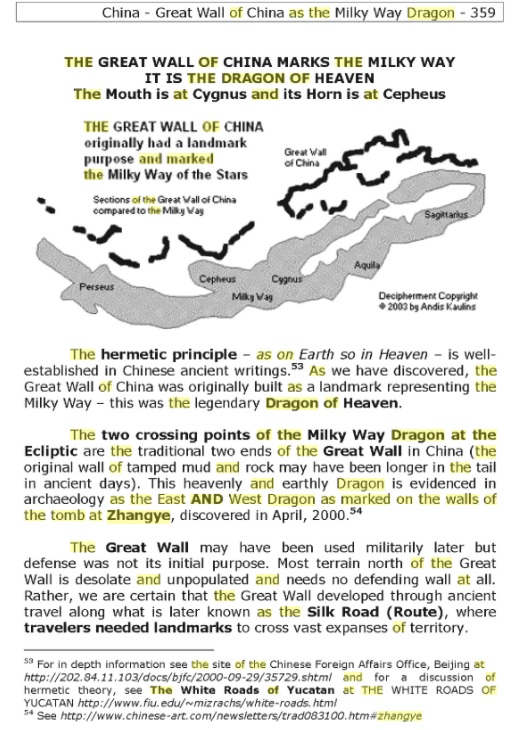



pervigil ecce draco iquamis erepitantibus horrens
Latin for:
awake, behold, a dragon, shivering with bursting forth from the ice
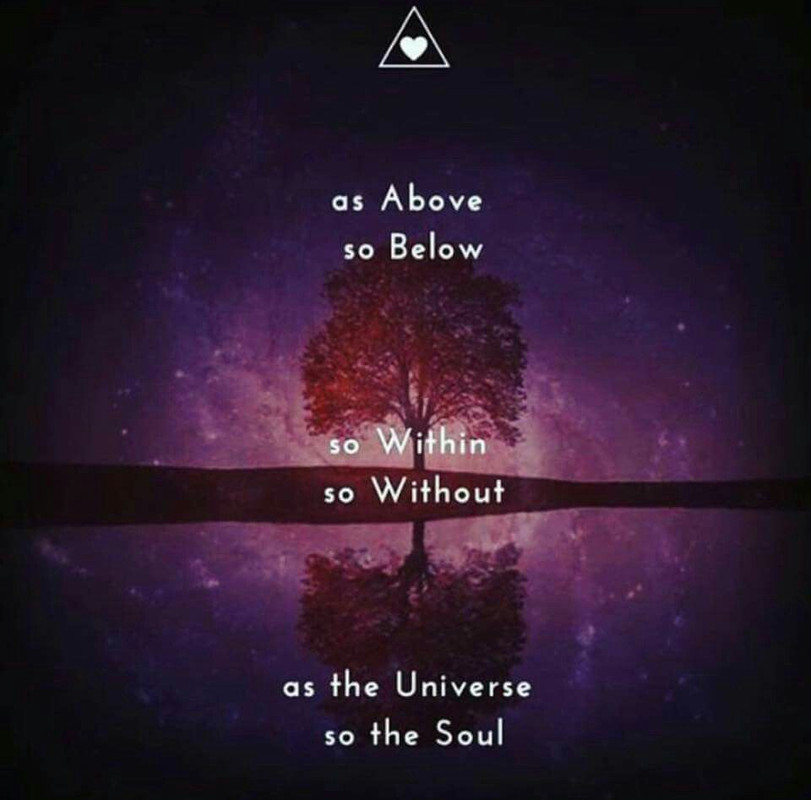

The term "the kingdom of God" appears 69 times in the Bible (KJV).



Aeon (Time), Gaea (Earth) and the four Carpi (Fruits) of the seasons are grouped in a familial scene. The god of time stands holding a wheel inscribed with the twelve signs of the zodiac. Gaea (Roman Tellus), crowned with a wreath of fruit, reclines upon the earth. Their four children, the fruits of the seasons, sit beside their mother. They are, from left to right, Eiar (Spring), Theron (Summer), Phthinoporon (Autumn) and Cheimon (Winter).
Shang Shu - Book of Documents
Shi Ji - Records of the Grand Historian
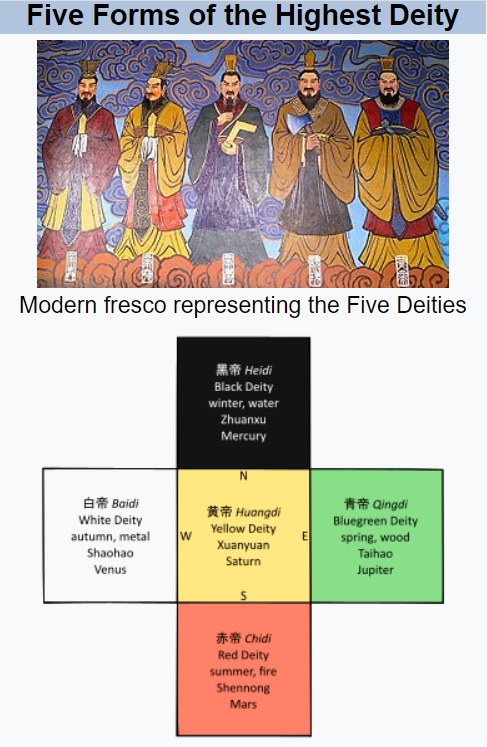
The Wǔfāng Shàngdì (五方上帝 "Five Forms of the Highest Deity"[note 1]), or simply Wǔdì (五帝 "Five Deities") or Wǔshén (五神 "Five Gods") are, in Chinese canonical texts and common Chinese religion, the fivefold manifestation of the supreme God of Heaven (天 Tiān). This theology harkens back at least to the Shang dynasty. Described as the "five changeable faces of Heaven", they represent Heaven's cosmic activity which shapes worlds as tán 壇, "altars", imitating its order which is visible in the starry vault, the north celestial pole and its spinning constellations.[note 2] The Five Deities themselves represent these constellations. In accordance with the Three Powers (三才 Sāncái) they have a celestial, a terrestrial and a chthonic form. The Han Chinese identify themselves as the descendants of the Red and Yellow Deities.
They are associated with the five colors, the five phases of the continuous creation, the five key planets of the Solar System and the five constellations rotating around the celestial pole, the five sacred mountains and five directions of space (their terrestrial form), and the five Dragon Gods (龙神 Lóngshén) who represent their mounts, that is to say the material forces they preside over (their chthonic form). They have also been defined simply as five special forms of the worship of the God of Heaven, different "accesses" or perspectives, suitable for different situations, to serve Heaven.
According to Zheng Xuan, the influence of their activity begets different categories of beings on earth. Explaining the ancient theology about the origins of kings from Heaven's impregnation of earthly women, he commented:
王者之先祖, 皆感大微五帝之精以生 — Every ancestor of him who is the king was given birth to as the result of an influential movement [gǎn 感] made by the spirits of the Five Deities.
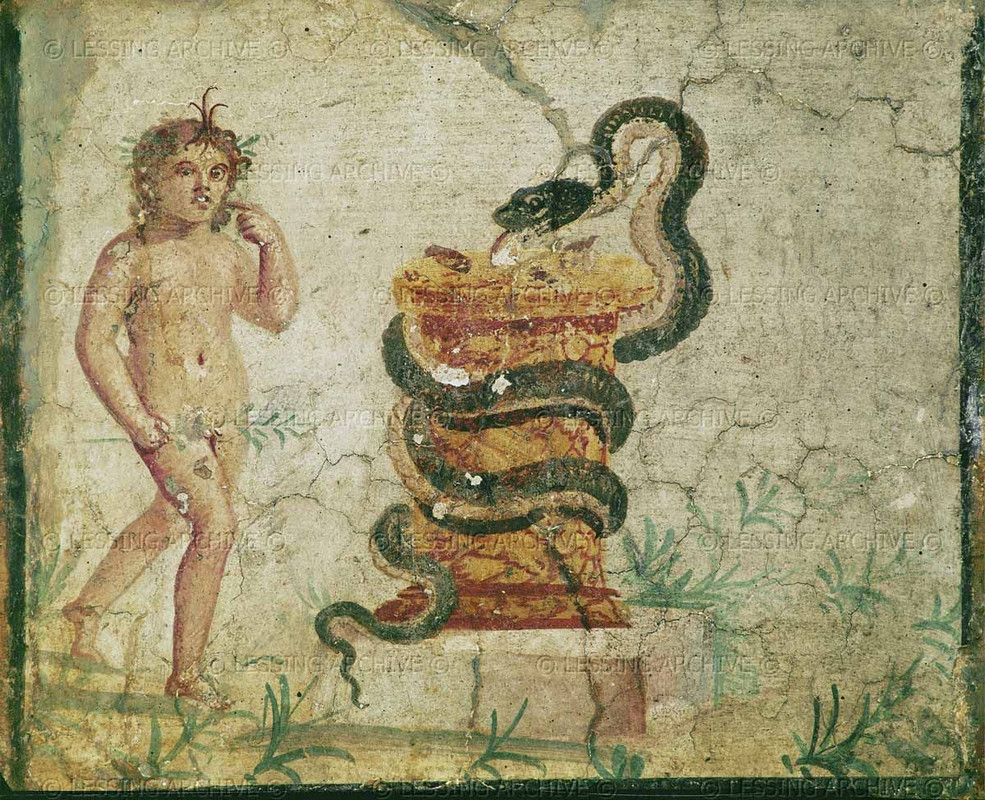

...In reality, the "serpent" that tempted Eve was probably not a "snake" — at least, not the kind you're imagining. Per Aleteia, the Hebrew word used in Genesis was nahash. This translates broadly to "serpent," but was also used to describe powerful Biblical creatures like giant sea monsters. Thus, it's quite possible the serpent in the Garden was a terrifying creature more like a dragon than a snake, which would help explain why Adam and Eve felt so compelled to obey his commands.
Chinese Guardian Lion or "Fu dog"
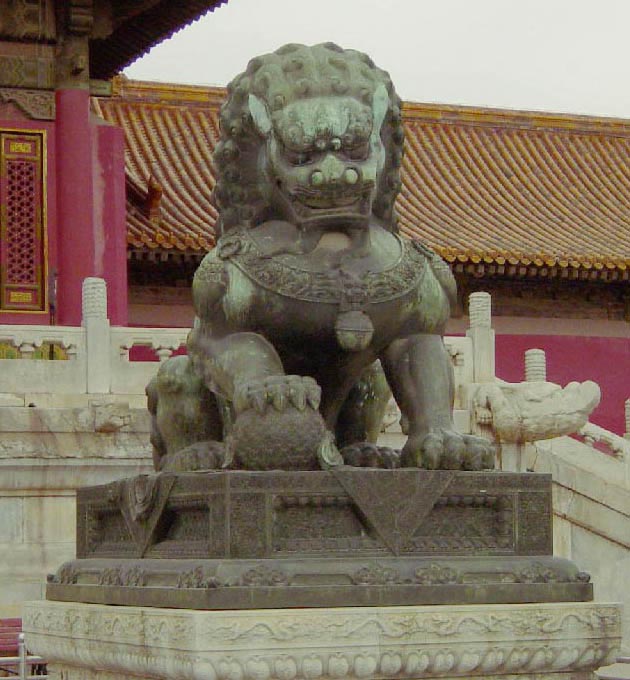

This is the seed of life, symbolic of genesis and creation. Why is it here under a dragon's paw?
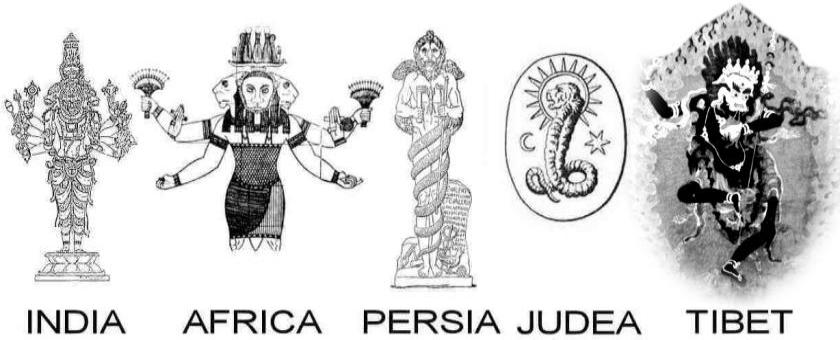
The Sphinx is likely a mixture of the two creatures, a lion and a dog, much like the Fu dog statue found in many Chinese gardens and was probably the animal originally found in the story of Genesis - a story that likely comes from ancient Chinese philosophy. (If you don't see the dog yet, it's because you may be missing part of the story. Read on.)
The Sphinx stands in judgement in front of the Great Pyramid (Anubis the dog god lead to the development of St. Michael).
The winged serpent/snake symbolism also probably leads to the numerous statements of "I am the beginning and the end, the first and the last". It's also why the snake in the story ended up crawling on its belly - because it was really a winged dragon to begin with and its wings were taken away. The dragon later appears in Genesis and is defeated at the end in Revelation.
The God in the Old Testament, if I had to guess, is probably a Chinese god of chaos, for example Hundun. It explains why this God was very vengeful, kicked people out of paradise, and flooded and drowned the world in the first few books. Of course, these did not happen in the physical world, this was happening in a spiritual, or unseen world.

Shanhaijing PDF - Classic of Mountains and Seas
Shan Jai Jing myths or structure of psyche
In the Shanhaijing catalog, which does contain numerous references to actual (and not mythological creatures) is mentioned the Dijang, with a picture associated with hundun. The creature is essentially described as a red dragonfly- a four winged, six legged creature that is "faceless", with body like a leather bag and red.


The Shanhaijing catalog of tribes (and probably of stars and psyche of the human mind) also shows the Phoenix as a peacock.


The Chinese story in Genesis is really a philosophical/psychological concept about the infinite nature of people's minds and represents "The Way" or the concept of critical thinking. Somehow, along the way, this seems to have been largely forgotten.







Astrology and Cosmology in Early China

No comments:
Post a Comment
Note: Only a member of this blog may post a comment.